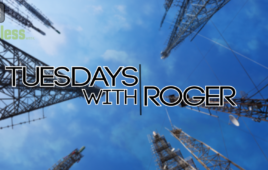Open lines of communication between the government and the telecommunications industry will become increasingly important as spectrum resources become more scare, one industry expert said.
According to Karl Nebbia, former head of the NTIA’s Office of Spectrum Management and current Director of Spectrum Policy for Alion Science & Technology, a collaborative approach will become “essential” as the industry looks to the government to open more airwaves for wireless communication.
“A major part of (addressing the spectrum crunch) is opening up an era of collaboration and cooperation between the government and the industry because as there is less and less spectrum they’ve just got to work together,” Nebbia said.
As spectrum becomes scarce, Nebbia said, industry will look to the government to free up more spectrum. But Nebbia, like others, said freeing up swaths of spectrum assigned to government agencies won’t be easy and will likely require spectrum sharing.
According to Nebbia, government agencies employ spectrum for a wide variety of purposes – from weather radar to air traffic control and tactical military systems – and those agencies often overlap their spectrum use. Thus, he said, even if one agency agrees to move off the band it doesn’t necessarily mean the airwaves will be clear.
“Part of the challenge in the federal bands is that because they generally have intermittent type of operations, they have used that (opportunity) to put a lot of different things in the bands available to them, whereas on the commercial bands you generally see a lot of uniformity (of use),” Nebbia explained. “So even if you eliminate one of them, it just doesn’t open up the spectrum in a simple manner.”
That’s where spectrum sharing will come in, he said.
In instances where an agency only uses the bands only occasionally, wireless operators could step in to utilize the airwaves for the vast majority of the time.
“If the Defense Department is on a band where they only do tests one percent of the time, why couldn’t the wireless industry use it the other 99 percent of the time?” Nebbia said. “It seems there are ways the wireless industry could use that spectrum but they’d have to be willing to share it. Unfortunately, the rhetoric (from the wireless industry) so far is they don’t like to share.”
Along with time-sharing, Nebbia suggested that future spectrum possibilities could include location-based solutions as well rather than just moving up the frequency scale.
Nebbia also said the best path forward in dealing with spectrum matters will ideally include brokering by neutral third parties in government-industry or industry-industry squabbles.
“We’re seeing lots of squabbles in the industry,” Nebbia said, “How much more complicated can you get than each side doing their own analysis and saying how it proves their case? And you’re left with the FCC and FTA in the middle.”
“I think in the end you’ve got to come up with an arrangement where both sides entrust tests to a sound technical expert and then whatever the answers are the answers are, it’s not scripted by one side or the other,” he said.
.jpg)
Karl Nebbia, former head of the NTIA’s Office of Spectrum Management and current Director of Spectrum Policy for Alion Science & Technology
Filed Under: Telecommunications (spectrums)




